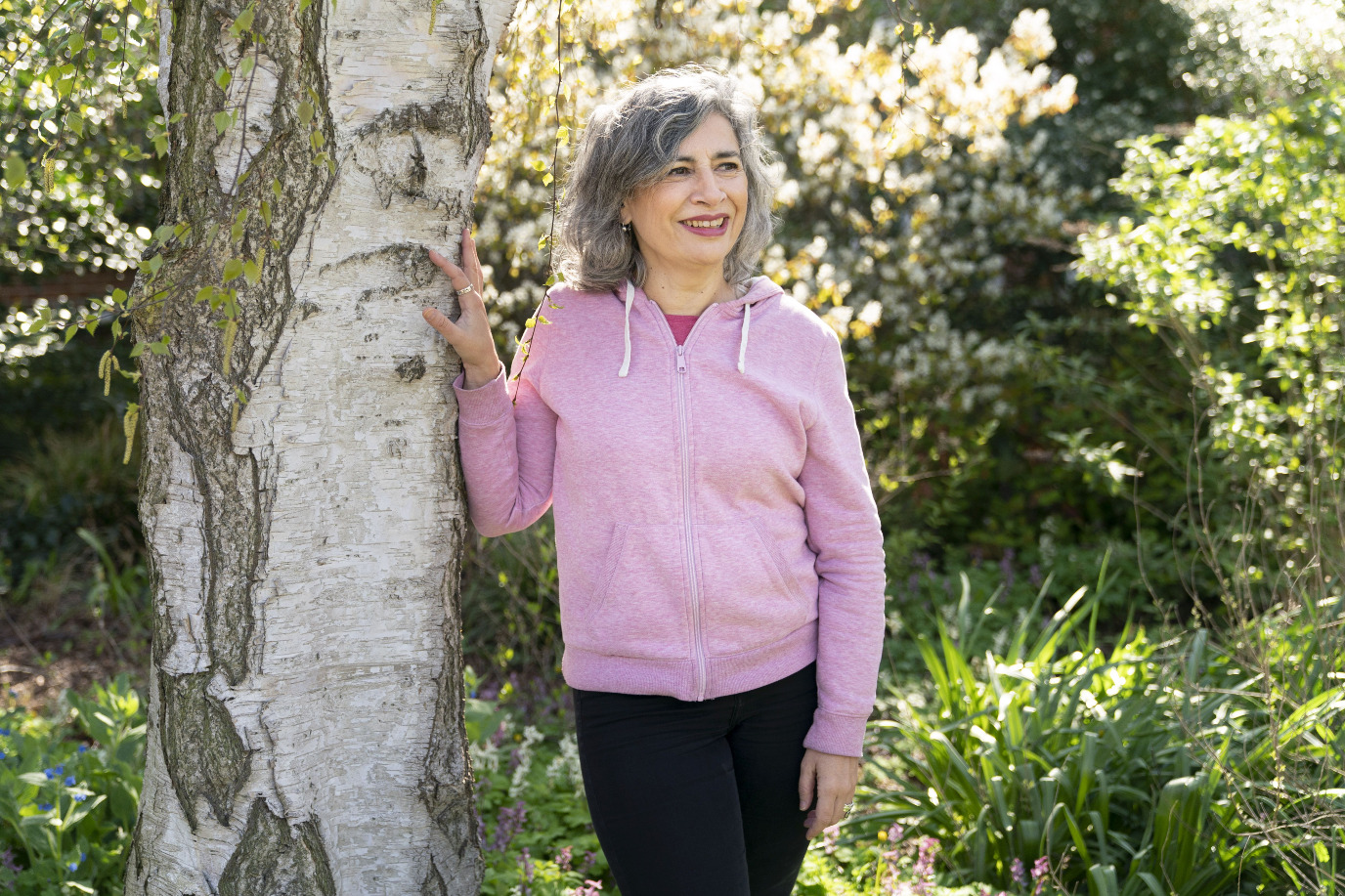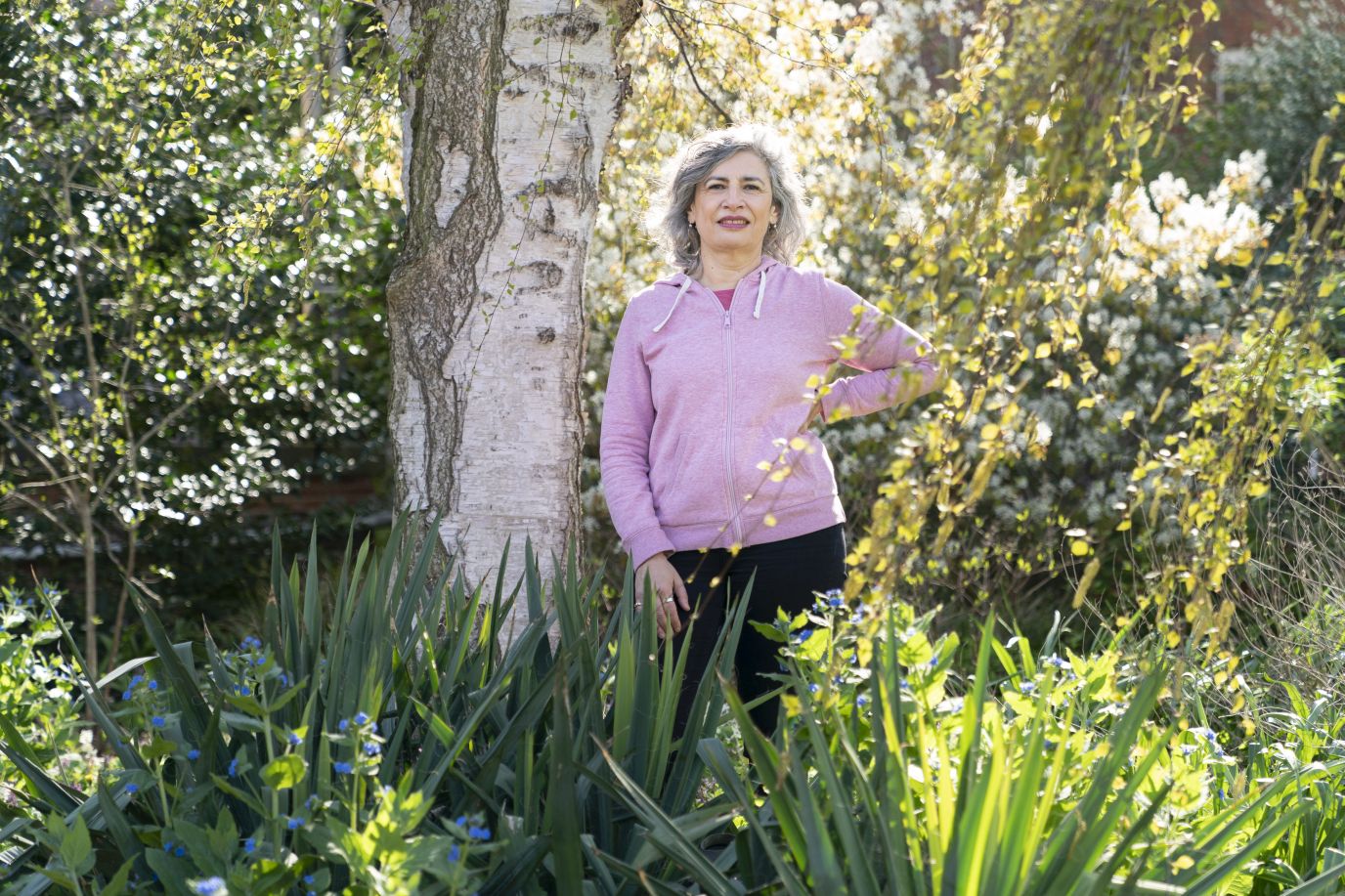Human or machine: who is the best translator?
Do readers enjoy machine-translated stories? Would they rather read human-made subtitles? What impact does technology have on the creative process in translation? Dr Ana Guerberof Arenas , assistant professor of Translation Studies at the Faculty of Arts, studies the impact of technology on translators and readers. She recently received an ERC Consolidator Grant of two million for her INCREC project to continue and deepen her research. She will specifically look at the creative process in translation in its intersection with technology and the influence the creative translation process has on the reception of creative content.
Text: Theone Joostensz | Photos: Reyer Boxem

In her previous research project, CREAMT, which was financed by a Marie Skłodowska Curie Individual Fellowship, Dr Guerberof Arenas explored different translation modalities, with and without the use of technology and presented Dutch and Catalan readers with three translations of an English source text: one made by human translators, one made by a machine, and one machine translation post-edited by human translators. The texts were reviewed by professional translators to find out the creative scores of each text. They were also presented to readers. After reading, they answered a questionnaire, which allowed the researchers to measure the readers’ engagement with the text. In other words, they measured to what extent the readers were ‘carried away’ by the story.
‘We noticed that machine translations scored significantly lower. Readers indicated that they were more easily distracted and that they couldn't always follow the text.’ In the experiment, the Catalan readers preferred the professional translation, while Dutch readers had a slight preference for the original English text, followed by the post-edited machine translation. This preference is somewhat remarkable. Dr Guerberof Arenas provides a cautious explanation for this: ‘Many Dutch readers are used to reading English texts. My hypothesis is that Dutch readers, as opposed to the Catalan ones, are used to reading English when this is the language of the author, so the post-edited machine translation probably received higher scores because it was closer to the English text in terms of structure. But this hypothesis would need to be tested.' The professional translators who assessed the text, however, preferred the professional translation. They appreciated the creativity the translator showed when working without technology.
The creative translation process
One remarkable result from the CREAMT study was that translators were far more creative and made fewer mistakes if they were allowed to translate freely than if they post-edited the machine translation. This finding forms the basis of the INCREC project, for which Guerberof Arenas received the ERC Consolidator Grant. The aim of this research project is to focus on the creative translation process of literary and audiovisual translators itself, as well as on the influence of this process on the user experience of the translated content. The project is divided into different work packages with different conditions. ‘We are capturing the human creative process by analysing how literary translators and subtitlers create texts. We know from previous psychological research that the creative translation process is roughly divided into four steps. First comes preparation, which is the process in which the translator looks at the possible problems that the text presents. This is followed by the incubation period, in which the translator reflects on the problem and looks for solutions in the language. Illumination comes next, which refers to the moment where the translator finds the best option - the Eureka moment - and finally, verification; at this final stage the translator checks whether the new idea fits in the given context.’
Dr Guerberof Arenas uses an eye-tracker as part of her toolkit. An eye-tracker uses a little camera with an infrared light at the bottom of the screen which tracks the user's eye movement and gazing directions. Gaze has been found to correlate to cognitive effort in previous research. Translators might, for example, fix their gaze longer on certain passages because they are confronted with a translation problem and they are thinking creatively about a solution. Afterwards, the translators would be presented with the recordings of their eyes and asked to comment on what they were thinking or feeling during these specific moments.
Guerberof Arenas also uses eye-tracking and interviews to study how readers engage with the translated texts. This allows her to see which parts of the text receive more attention. Are these the same parts as those where the translators were the most creative? Or, for example, are they fixating longer on a word because this is an error made by the machine translation?

Insert a disk
Creativity has always played an important role in her research. Why is she so fascinated with this subject? Guerberof Arenas: ‘My parents were actors, so I think creativity has always been an important part of my life. My academic career is also influenced by it. I worked as a technical translator in Ireland and Spain for many years and have translated countless manuals. My colleagues and I already made use of a sort of machine translation then; we developed macros to automatically replace parts of texts. Because no one really enjoys translating ‘insert a disk’ 20,000 times. Machine translation is capable of taking over such work nowadays.’
Could a machine ever deliver a good, creative literary translation? At the moment, Guerberof Arenas doubts this can be the case. ‘Machines can be considered creative in some sense. I mean, creating a new text by ordering words or structures in a new way is also a form of creativity. But there is more to creativity than this. A machine translation is less creative, because it repeats the structure of the source language in the target language. Professional translators, on the other hand, dive into the meanings of words and make use of the real world around them to offer creative alternatives that depart from the source text. For example: one of the characteristics of creativity is recognizing problems. In a translation this can be a contextual problem, something you find difficult. How, for example, do you translate ‘King's Day’ from Dutch into English? It requires expertise to identify and solve a problem, and, at the moment, the machine is not able to identify certain problems and then verify the solution in the real world.’
Guerberof Arenas wants her research to contribute to the development of tools that help people. ‘Such as tools that help translators and writers to search for information and provide suggestions to solve a problem.’ The aim is certainly not to replace people, she emphasizes. The possibility of a machine translation of Tolstoy's classic Anna Karenina does not appeal to her: ‘I love writing, and reading even more so. When I buy a translated book, it is important to me to know who translated it. Writing and translating are creative endeavours which have always been considered human qualities. Being creative makes us happy and gives meaning to our lives. Why would we take that away from ourselves and give it to a machine?’
About Ana Guerberof Arenas
The Argentinian Ana Guerberof Arenas did not have a traditional academic career path. When she was fourteen the family moved to Spain; since then she has found herself somewhere at the intersection between several countries. A good starting point for translators, who also find themselves at the intersection of two cultures, she thinks. She studied translation in Granada and continued to work in the language industry in Dublin and Spain for many years in different roles. She obtained her international Doctoral degree in Translation and Intercultural Studies at Universitat Rovira i Virgili. She has been working at the Faculty of Arts at the University of Groningen since 2020.
This article was translated from Dutch to English by Mack Meels.
More news
-
18 November 2025
What about the wife beater? How language reinforces harmful ideas
-
03 November 2025
Menopause in perspective: How the media influences our perception
-
23 October 2025
Nine UG researchers awarded Vidi grant
